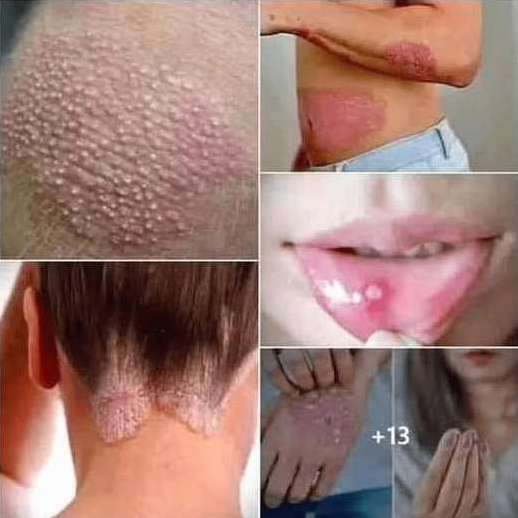It started with a bump.
Nothing dramatic, nothing painful. Just a small, flesh-colored bump on the back of my hand that I figured was from working out too much or forgetting to moisturize. I didn’t think much of it—until a few weeks later, I noticed another one. And then another, in a more private place. That’s when the anxiety crept in.

Like most people, I’d heard of HPV, or human papillomavirus, in passing. Usually during awkward health class lectures or in the fine print on posters at my doctor’s office. I knew it was common. I knew it was sexually transmitted. But what I didn’t know—what no one really tells you—is how silent and varied the symptoms can be. HPV doesn’t always announce itself loudly. Sometimes it whispers. Sometimes it says nothing at all.
But your body does talk. You just have to learn how to listen.
If you’re here because you’re curious, nervous, or just trying to be informed, you’re in the right place. This isn’t a lecture—it’s a conversation. And it might be one of the most important ones you’ll have with yourself this year.
🌿 First Things First: What is HPV, Really?
Let’s not overcomplicate this. HPV stands for human papillomavirus. It’s actually a group of over 200 related viruses, and more than 40 of them are transmitted through sexual contact.
Here’s the wild part: most sexually active people will contract at least one type of HPV in their lifetime, usually without even realizing it. For many, the body clears it on its own, no fuss. But in some cases, the virus lingers—and that’s when it can start causing problems.
Some strains cause genital warts. Others are considered high-risk because they can lead to certain types of cancer, including cervical, throat, anal, penile, and vulvar cancers.
That’s why spotting the signs early matters. Your body could be giving you subtle hints that it’s time to pay attention.
⚠️ 1. Warts — Not Always Where You Expect
This is perhaps the most recognizable sign of an HPV infection, but not everyone knows what to look for.
Genital warts might appear as:
- Small, flesh-colored or gray swellings
- A cluster that looks like a cauliflower
- Itching or discomfort in the genital area
They can pop up on the vulva, penis, anus, cervix, or even in the mouth or throat after oral sex. And here’s the kicker: they’re not always painful. That makes it easy to ignore them—until they multiply.
In some cases, HPV can cause common warts on the hands and fingers, or plantar warts on the feet. These are often caused by non-sexually transmitted strains but still serve as a reminder: your skin can be a roadmap to what’s going on inside.
🧬 2. Changes in the Cervix: What a Pap Smear Might Reveal
This one doesn’t come with any outward symptoms, which is why routine Pap smears are so crucial—especially for women between the ages of 21 and 65.
High-risk types of HPV, like types 16 and 18, can cause cellular changes in the cervix that may lead to cervical cancer. These changes often show up during a Pap test as:
- Abnormal squamous cells
- Signs of HPV-related cellular transformation
- Inflammation that needs further investigation
Here’s the thing: you won’t feel these changes happening. You can be healthy, energetic, and symptom-free while something serious is quietly developing. That’s why early detection is everything.
😮💨 3. Persistent Sore Throat or Hoarseness
If you think HPV symptoms only affect the lower half of your body, think again. Certain strains of the virus are linked to oropharyngeal cancers, which affect the back of the throat, tonsils, and base of the tongue.
Signs to watch for:
- A sore throat that doesn’t go away
- Hoarseness lasting more than a few weeks
- Ear pain without any ear infection
- Difficulty swallowing or a lump in the neck
If you’re experiencing these symptoms—especially if they’re unexplained and persistent—it’s worth having a conversation with your doctor.
🩸 4. Unusual Bleeding or Discharge
HPV-related cervical changes can sometimes cause spotting between periods, bleeding after intercourse, or unusual vaginal discharge. While these can have many causes, when they occur without explanation, they’re worth investigating.
Don’t panic, but don’t ignore them either. Your reproductive system is a finely tuned machine. When it acts out of character, it’s often for a reason.
🧍 5. Pain During Sex
Pain during sex—also known as dyspareunia—can sometimes be linked to HPV-related lesions, warts, or inflammation, especially if the virus has caused internal growths or cervical abnormalities.
It’s not always HPV, of course. But recurring discomfort should never be normalized or brushed off. Sex shouldn’t hurt, and pain is your body’s way of waving a red flag.
🧠 6. Emotional and Psychological Signs
This might seem out of place in a list of physical symptoms, but it’s not.
The fear of having an STI like HPV can trigger:
- Anxiety or guilt
- Avoidance of intimacy
- Shame that prevents people from seeking help
Let’s be clear: HPV isn’t a reflection of your character or your choices. It’s a common virus, and you are not alone. If you’re feeling overwhelmed, that too is a sign that deserves attention.
🔍 What To Do If You Suspect HPV
- See your doctor. Whether it’s a routine screening or a reaction to something you’ve noticed, don’t delay.
- Get tested. Pap tests and HPV tests can help detect the virus before it causes problems.
- Follow up. If your test shows abnormalities, your provider might suggest a colposcopy or biopsy.
- Get vaccinated. If you’re eligible and haven’t already, the HPV vaccine (like Gardasil) can protect against the most dangerous strains.
- Practice safe sex. Condoms don’t eliminate risk entirely, but they lower it significantly.
💬 Final Thoughts: HPV Isn’t a Shameful Secret—It’s a Public Health Conversation
One of the most dangerous things about HPV is how quiet it can be. No dramatic symptoms. No flashing warning signs. Just subtle shifts in your body that are easy to dismiss.
But if there’s one thing I’ve learned, it’s this: your body knows. And when it whispers, we have to listen.
You don’t have to be afraid. You just have to be aware.
Stay informed. Stay curious. Stay healthy.


